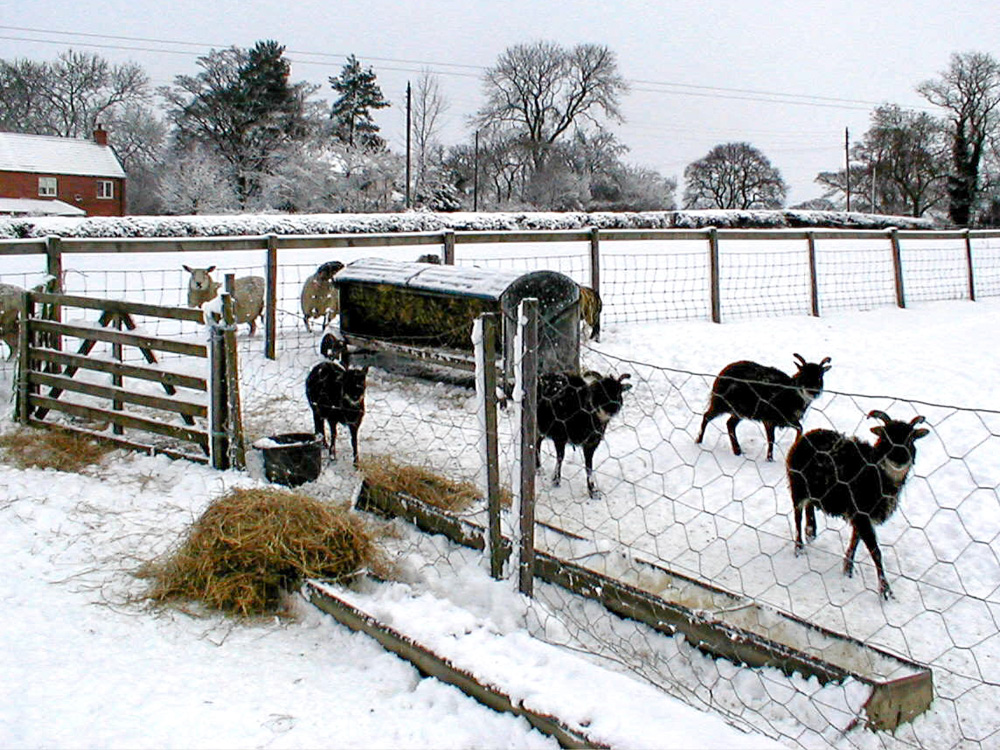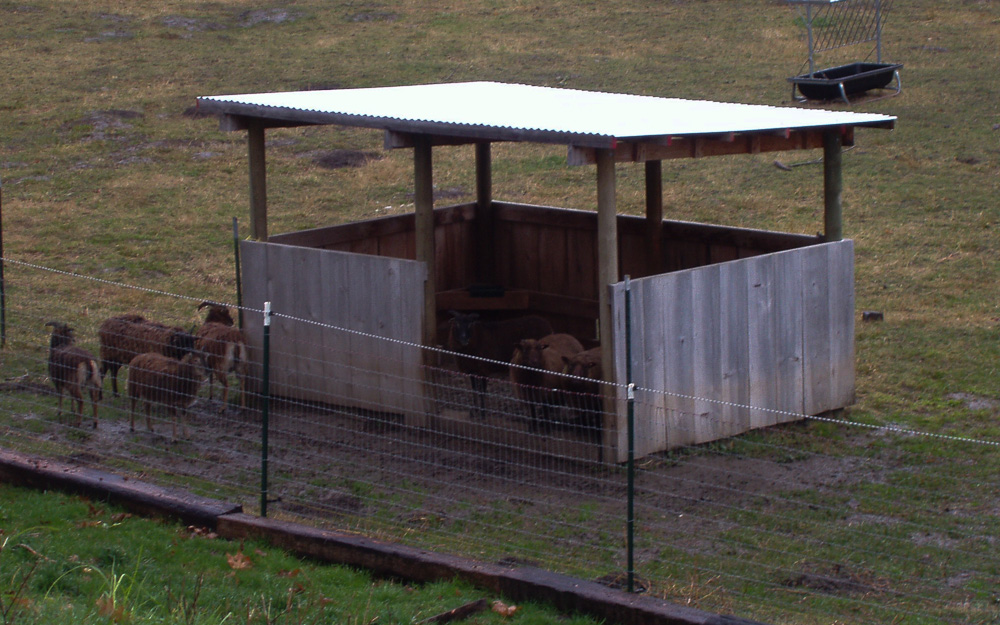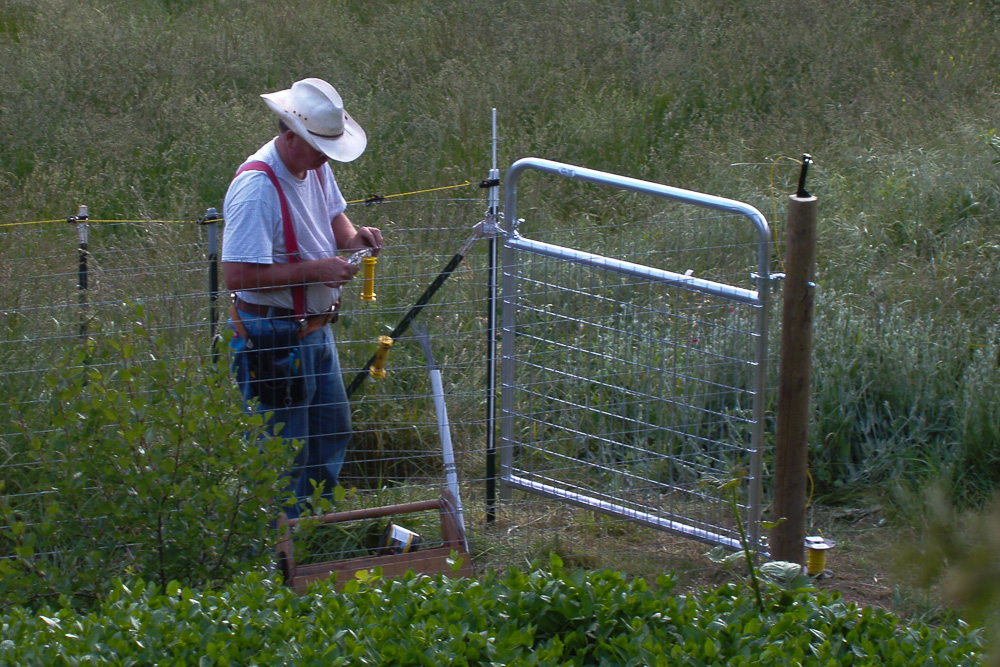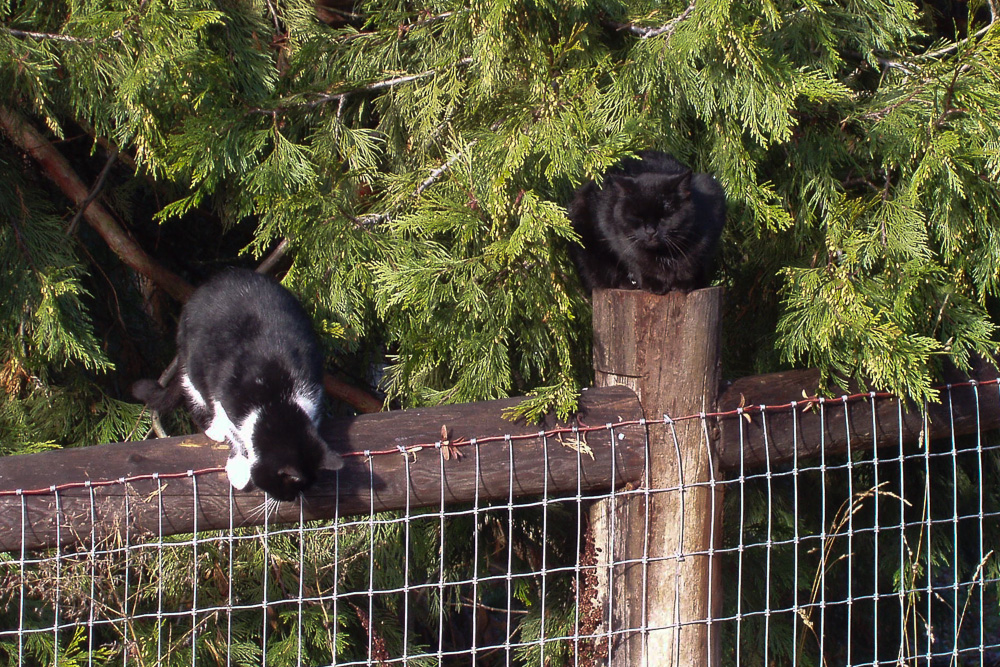Feed and water
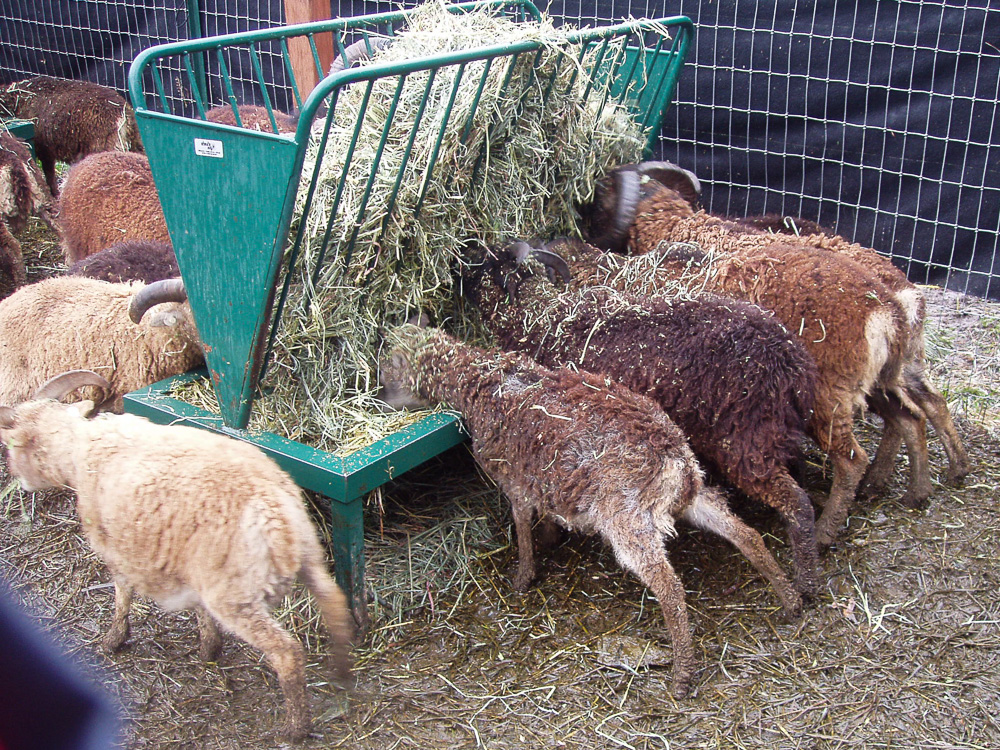 Soay sheep need grass and weeds. They actually
prefer weeds, brush and grass in that
order. In most areas of the continent, pasture growth stops or slows to the point that
you will need to provide hay over the winter. How much and for how long depends on your
climate and situation. Soay sheep do best on plain grass hay. They have no need for a
diet as rich as alfalfa. We've found that it pays to buy the best grade of grass hay you
can find. The sheep will pick through stemmy hay looking for leaf, and waste a lot of
it; hay with a lot of leaf and little stem seems to be money well spent since they eat
it all and you don't have to feed as much. It would be appropriate to offer heavily
lactating ewes a supplement of alfalfa or grain or prepared ewe ration to prevent their
condition from deteriorating. Rams and wethers should never be fed alfalfa, grain or
alfalfa- based ration on a regular basis since the high calcium content of these feeds
presents an increased risk of bladderstones. Male sheep have a much longer, narrower
urethra than the females. However, a little grain or alfalfa used now and then to lure
your rams from one place to another is not a problem.
Soay sheep need grass and weeds. They actually
prefer weeds, brush and grass in that
order. In most areas of the continent, pasture growth stops or slows to the point that
you will need to provide hay over the winter. How much and for how long depends on your
climate and situation. Soay sheep do best on plain grass hay. They have no need for a
diet as rich as alfalfa. We've found that it pays to buy the best grade of grass hay you
can find. The sheep will pick through stemmy hay looking for leaf, and waste a lot of
it; hay with a lot of leaf and little stem seems to be money well spent since they eat
it all and you don't have to feed as much. It would be appropriate to offer heavily
lactating ewes a supplement of alfalfa or grain or prepared ewe ration to prevent their
condition from deteriorating. Rams and wethers should never be fed alfalfa, grain or
alfalfa- based ration on a regular basis since the high calcium content of these feeds
presents an increased risk of bladderstones. Male sheep have a much longer, narrower
urethra than the females. However, a little grain or alfalfa used now and then to lure
your rams from one place to another is not a problem.
For a very rough guide on how much hay your sheep will require, figure 3% to 5% of body weight per day of good quality grass or timothy hay, depending. Adult rams lying around all day require less than ewes nursing twins.
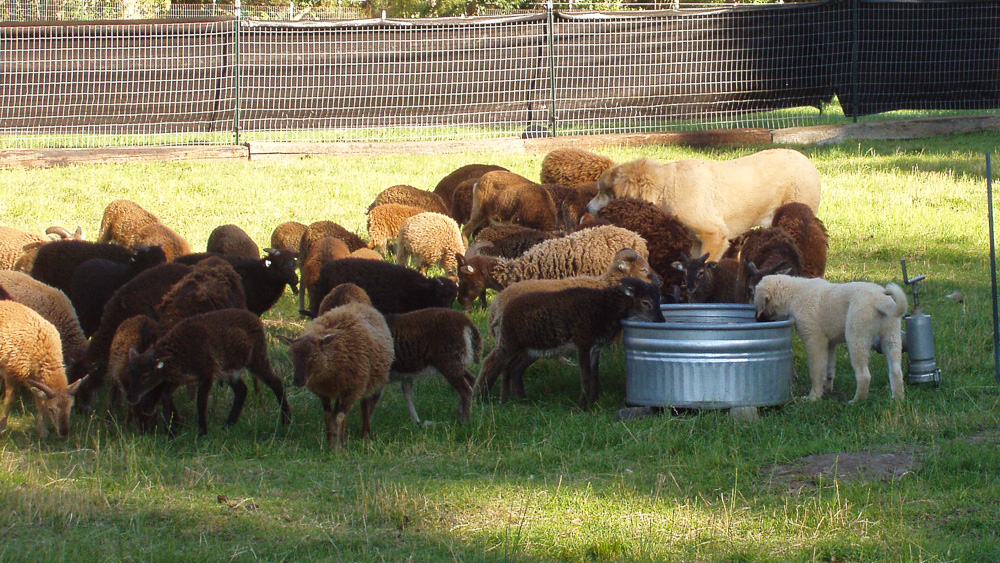 Sheep need water and, ironically, more in winter when they are eating dry hay.
Sheep need water and, ironically, more in winter when they are eating dry hay.
We are often asked how many acres it takes to keep a flock of Soay, or, put another way, how many can be supported on this many or that many acres. Obviously, this depends on the productivity of the land — on soil and climate, rainfall and irrigation, pasture management and rotational practices — and on how much hay you can afford. Some breeders we know must feed hay year round.
If you are not sure, you will probably do best to start small, with perhaps five sheep, say three ewes and a ram and a wether. Five sheep should be fine in most situations on a couple of acres with a good perimeter fence and divided, perhaps with temporary fencing, into a few small paddocks. See how it goes, and with only a few to look after, you can easily make adjustments as you go. Watch how long the summer pasture lasts, and how fast you go through hay in the winter and go from there.
Shelter
What we have to say on this score is based on watching how our sheep behave. During January, here in the foothills of Southern Oregon, the temperatures go down into the teens and occasionally single digits. Our sheep don't seem to mind, or if they do mind, it doesn't occur to them to move to the shelters that we provide.
